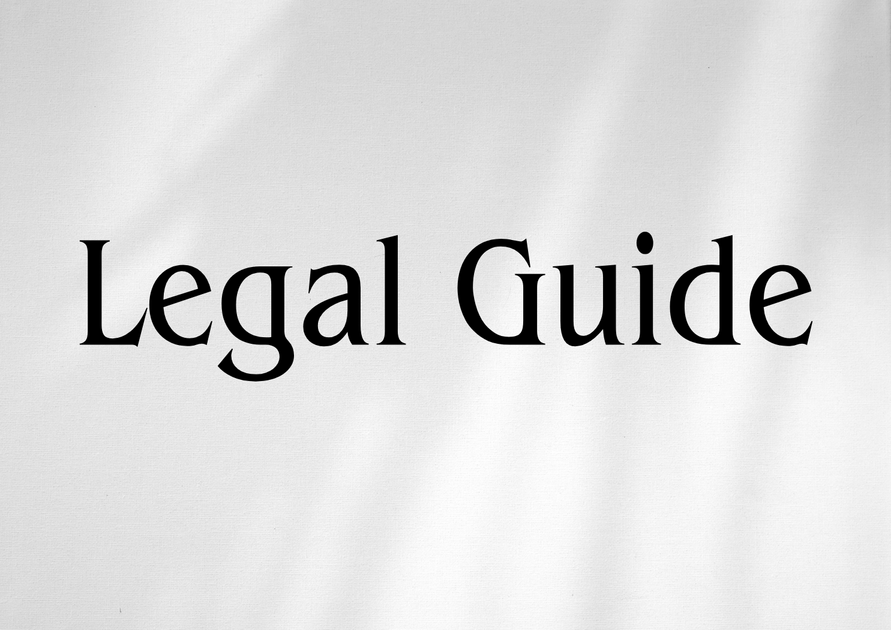Introduction
As artificial intelligence (AI) swiftly evolves, it reshapes industries from healthcare and finance to media and manufacturing. In this era of technological disruption, the question of ownership and protection for AI-generated content has become a pressing legal challenge worldwide—including for businesses and stakeholders in the UAE engaging with the US market or leveraging US law for cross-border transactions. Intellectual Property (IP) frameworks, particularly in leading jurisdictions such as the United States, are being rigorously examined and updated to address whether and how content produced by autonomous systems enjoys legal protections including copyright and patents. This analysis reviews current US law regarding the intellectual property rights of AI-created works, highlighting legal developments, regulatory interpretation, and compliance recommendations. It will be especially relevant to UAE companies operating internationally, lawyers advising multinational clients, and decision-makers aiming to stay ahead of disruptive legal trends, as recent UAE law updates and federal decrees are increasingly harmonising with global standards.
Understanding the US IP landscape is vital for UAE-based corporates, particularly given the UAE’s ambition to serve as a leading innovation hub by 2031, as outlined in its National Strategy for Artificial Intelligence and recent updates to Federal Decree Law No. 38 of 2021 on Copyrights and Neighbouring Rights (amended 2023). This article offers a consultancy-level analysis, bridging US and UAE perspectives to offer actionable insights and compliance guidance for executives, general counsel, and HR leaders navigating this fast-changing territory.
Table of Contents
- US Legal Framework for IP Rights in AI-Generated Content
- Key Provisions and Recent Changes in US IP Law Regarding AI
- Copyright Ownership of AI-Generated Content
- Patent and Trademark Considerations for AI Outputs
- UAE Law and Cross-Border Considerations
- Case Studies and Practical Compliance Strategies
- Risks of Non-Compliance and Legal Mitigation Strategies
- Conclusion and Forward-Looking Perspective
US Legal Framework for IP Rights in AI-Generated Content
1.1 The Statutory Baseline
The US intellectual property system is governed by federal statutes such as the Copyright Act of 1976 (17 U.S.C. §§ 101 et seq.), the Patent Act (35 U.S.C.), and the Lanham Act for trademarks. These statutes were drafted in an era before sophisticated AI, thus raising interpretive challenges when applied to works and inventions created autonomously by machines.
1.2 The Impact of Technology and Precedent
US courts and regulatory agencies, notably the US Copyright Office (USCO) and the United States Patent and Trademark Office (USPTO), have issued recent guidance clarifying the extent to which AI-generated content is protectable. In March 2023, the USCO published a formal policy statement on the copyrightability of AI-generated works, following rising registrations for both fully machine-authored and hybrid creations.
1.3 Why This Matters for UAE Businesses
For UAE enterprises exporting to, partnering in, or investing in US ventures, awareness of these evolving standards is critical. The UAE’s own federal copyright reforms and robust enforcement mechanisms—see Federal Decree-Law No. 38/2021—are increasingly informed by US and global IP jurisprudence. Non-compliance or misunderstandings around US law can not only expose stakeholders to litigation and reputational risk but also jeopardise royalty streams and technology transfer agreements.
Key Provisions and Recent Changes in US IP Law Regarding AI
2.1 Human Authorship Requirement
The defining principle in current US law is the human authorship requirement. Under both statute and longstanding jurisprudence, only works created by a human mind are eligible for copyright protection. The leading authority is Burrow-Giles Lithographic Co. v. Sarony (US Supreme Court, 1884), reaffirmed by the 2022 Thaler v. Perlmutter case, in which federal courts and the USCO confirmed that works produced autonomously by AIs such as “DABUS” or “Midjourney” do not qualify for copyright registration unless there is a substantial creative contribution from a human author.
2.2 US Copyright Office Guidance 2023
- Works entirely generated by AI (without human selection, arrangement, or modification) are not copyrightable in the US.
- Hybrid works, where a human selects, edits, or substantially transforms AI outputs, may qualify for protection, but only for the human-contributed elements.
- Applicants for registration must disclose the nature and extent of AI involvement and be transparent regarding the process—failure to do so risks later invalidation.
| Aspect | Pre-2023 Interpretation | Post-2023 USCO Guidance |
|---|---|---|
| Human Authorship | Implied but not explicitly tested against AI | Explicitly required and enforced |
| AI-Only Works | Unclear, case-by-case | Not copyrightable under current law |
| Hybrid Works | Potential for broader protection | Only human contribution protected |
2.3 Patent Law Perspectives
The US Patent Act requires an individual inventor to be named on patent applications. Landmark cases such as Thaler v. Hirshfeld (2021, US Federal Circuit) have confirmed that under 35 U.S.C. § 100(f), only natural persons (not machines or AI) can be recognised as inventors. There is currently no valid mechanism in the US for awarding patents to inventions conceived solely by AI.
2.4 Trademark Law and AI
Trademark rights, governed by the Lanham Act, do not directly restrict or enable AI-generated marks, but registration and enforcement still hinge upon clear ownership, bona fide human intent, and distinctiveness—all of which raise unique questions when brand assets are designed by algorithms.
Copyright Ownership of AI-Generated Content
3.1 Defining Ownership
Following recent USCO and court rulings, a clear distinction must be drawn:
- Fully-AI Generated Works: Not subject to US copyright protection. No registration possible.
- Human-AI Hybrid Works: Protection extends only to elements reflecting human selection, arrangement, editing, or substantive creative guidance.
- Human Supervisory Role: Where a user provides detailed prompts or curates outputs, determining the threshold for human authorship is likely to be contentious and fact-specific. Documentary evidence of human contribution will be critical for any claim.
| Scenario | Copyright Status | Compliance Actions |
|---|---|---|
| Fully autonomous AI creation | No copyright | Consider alternative IP or contract protection |
| Hybrid AI-human creation | Human-authored portions protected | Document all human involvement |
3.2 Practical Insights: For UAE Companies Using AI in the US
UAE-based organisations employing generative AI to create marketing materials, reports, software code, or other assets need to:
- Keep explicit records of human guidance, selections, or edits in producing content intended for US markets.
- Educate staff that US copyright law will not protect works produced solely by AI, even if protected under UAE law or local custom.
- Include robust assignment, confidentiality, and licensing terms in contracts with AI providers, designers, or collaborating personnel.
3.3 Example: Cross-Border Digital Marketing
Consider a UAE fintech company commissioning an AI-powered tool to generate branding collateral for the US market. If all design choices are automated, competitors could lawfully reuse or remix these assets in the US without risk. However, if creative directors document their selection and modification of AI-generated elements, those portions can be protected and defended.
Patent and Trademark Considerations for AI Outputs
4.1 Patent Eligibility
Under US law, a “patent” may only be granted to ‘inventors’ who are natural persons. US courts have repeatedly ruled against AI systems being listed as inventors, most notably in Thaler v. Hirshfeld. This exclusion means companies cannot claim exclusive rights over inventions where AI, rather than human staff, conceived all inventive aspects.
4.2 Best Practice for UAE Technology Companies
- Ensure human oversight throughout the innovation lifecycle—ideation, testing, refinement—to preserve patent eligibility.
- Maintain detailed invention logs, demonstrating concrete human conception and development of patentable solutions, even when using advanced AI.
- Consult with US legal advisors to structure R&D projects, invention disclosures, and IP filings in compliance with current jurisprudence.
4.3 Trademarks, Brands, and AI
AI-generated brand elements—logos, slogans, or trade dress—must be adopted, controlled, and used in commerce by natural persons or legal entities. Human intent and commercial engagement remain prerequisites for valid trademark registration and enforcement under the Lanham Act. Proof of continuous use in interstate commerce is essential, regardless of design provenance.
4.4 Table: Patent Inventorship Requirements (US vs. UAE)
| Criteria | United States | UAE (Federal Law No. 11/2021) |
|---|---|---|
| Inventor Must Be Human | Yes | Yes, with limited exceptions for ‘legal persons’ in joint R&D |
| AI-Only Inventions Eligible? | No | No current mechanism |
| Assignment Possible? | Yes (from human inventors only) | Yes (subject to registration with MoE) |
UAE Law and Cross-Border Considerations
5.1 UAE Copyright and Intellectual Property Rules
The UAE’s Federal Decree-Law No. 38 of 2021 and recent Cabinet Resolution No. 37 of 2023 modernise national copyright policy—covering both classic authorship and certain forms of computer-generated and computer-assisted works. While the UAE does not yet have clear statutory guidelines as strict as the US regarding AI authorship, the trend is toward harmonizing with global standards, especially for cross-border enforcement and recognition of foreign IP rights.
5.2 Comparing US and UAE Approaches (Table)
| Aspect | United States | UAE |
|---|---|---|
| AI-Generated Copyrightable? | No, unless substantial human input | Partially (hybrid works may be protectable) |
| Disclosure Required? | Yes, in USCO filings | Enforced case-by-case |
| Enforcement Internationally | Through treaties (e.g., Berne Convention) | Through reciprocal agreements, but nuanced |
5.3 Cross-Border Enforcement and Contractual Safeguards
To maximize global enforceability, UAE clients should:
- Utilize dual filings in both UAE and US jurisdictions for key assets.
- Draft contracts specifying applicable law, dispute resolution venues, and detailed IP ownership clauses, especially in collaborations or outsourcing involving AI.
- Seek US legal advice before beginning exploitation of AI-generated works targeting US audiences.
Case Studies and Practical Compliance Strategies
6.1 Hypothetical Scenario: AI Content in Cross-Border E-commerce
Imagine a UAE-based e-commerce platform uses an AI tool to generate product descriptions and images for the US market. If these outputs are used “as is”, without human editing or customization:
- Competitors in the US could reuse descriptions or images with impunity—no copyright infringement under US law.
- If UAE staff add creative edits, custom arrangements, or unique perspectives, those creative layers may be protected if fully documented.
- Company IP policies must guide staff to log all substantive interventions as well as protect creativity contributing to brand distinctiveness.
6.2 Best-Practice Checklist
| Action | Details | Responsible |
|---|---|---|
| Documentation of Human Input | Record selection, editing, or modification process | Creative teams, legal |
| IP Ownership Clauses | Amend contracts to clarify AI vs. human authorship | Legal, HR |
| Regular Staff Training | Educate on US and UAE IP law differences | Legal, HR |
| Filing Disclosures | Be transparent in USCO/USPTO applications | Legal |
| Legal Audit | Annual IP compliance review | External counsel |
6.3 Visual Suggestion
We recommend including a compliance process diagram outlining the step-by-step approach from conception of an AI-generated asset to its legal registration and enforcement actions, illustrating checks for human authorship, contractual risk mitigation, and jurisdictional considerations.
Risks of Non-Compliance and Legal Mitigation Strategies
7.1 Risks for UAE Businesses Exporting to the US
- Loss of IP Rights: AI-generated works deemed ownerless may become part of the public domain in the US, resulting in zero recourse for commercial exploitation or infringement.
- Litigation and Enforcement Challenges: Falsely claiming copyright in AI-only assets may expose companies to invalidation risks and reputational harm.
- Cross-Border Conflicts: Divergent treatment of AI works between UAE and US could hinder the enforceability of contracts, licences, or IP portfolios.
7.2 Mitigation and Compliance Strategies
- Audit current IP portfolios for works with any AI provenance intended for US markets.
- Implement robust internal controls to track and document all stages of human involvement in content creation.
- Engage in preemptive legal consultations before pursuing US IP filings or market launches.
- Draft clear internal AI policies covering ownership, licensing, and third-party risks.
Conclusion and Forward-Looking Perspective
The intersection of AI technology and intellectual property law exemplifies the legal challenges arising from innovation. As of 2024, US law maintains a narrow path for protecting AI-generated content, hinging on demonstrable human input and transparent procedures at every stage of the creative or inventive process. For UAE businesses and legal teams seeking to commercialize or safeguard AI-assisted works in the US, this means compliance is not merely a matter of local policy but a cross-border, evidence-driven exercise grounded in clear contractual, procedural, and legal safeguards.
Looking ahead, we anticipate further harmonization between US and UAE IP regimes, as global best practices and treaty obligations (such as the Berne Convention) drive greater convergence. Meanwhile, companies should continue to:
- Prioritize thorough documentation and transparency in all use of AI for content creation or R&D.
- Update employment, consulting, and licensing contracts to reflect nuanced requirements around authorship and inventorship.
- Proactively monitor legal developments in both jurisdictions, including forthcoming guidance from the USCO, USPTO, and the UAE Ministry of Economy.
By remaining vigilant and agile, UAE entities will not only avoid costly legal pitfalls but also build resilient, globally enforceable IP portfolios—securing their competitive edge in the rapidly expanding digital economy.




